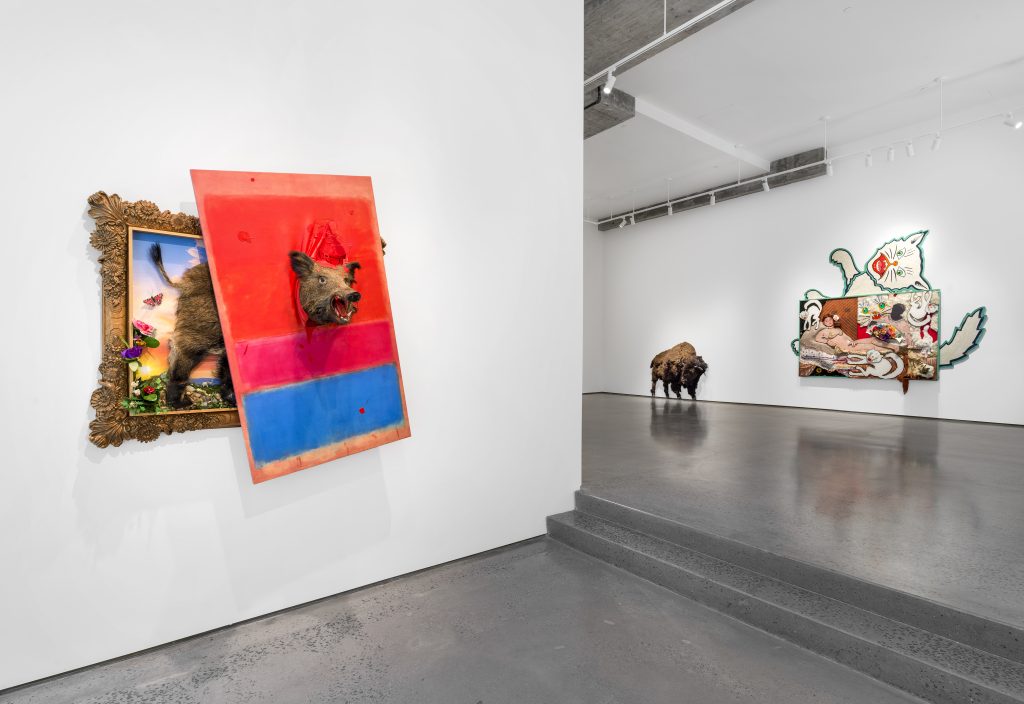“Déjà vu,” a new exhibition of artwork by Mike Shultis at the gallery Morgan Presents in New York City, was a lightning bolt of fun to visit.
At the outset, there were definitely other currents beneath the surface, but that facet — meaning, how fun it all was — really grabbed my attention.
An Explosive Trek through History
Shultis’ art, as displayed here, contains direct, art historical parallels in its visuals, whether that’s the taxidermied boar head that’s ripping through an apparent reproduction of a piece by Mark Rothko in “Europe” (2024) or the reproduction of Édouard Manet’s “Olympia” (1863) — itself semi-recently a visitor to New York, over at The Met — in Shultis’ “Cats” (2024).
But at junctures where the included images might leave you expecting a traditional painting, that’s absent. The nod to Rothko appears in “Europe” in the form of what was apparently inkjet printing onto canvas: a clear differentiation from Rothko!
Across the exhibition, Shultis uses “mixed media,” as the ubiquitous descriptor goes, to far-reaching effect. The gallery’s press release notes the materials that Shultis packed behind an acrylic sheet in some of these works included “foraged clothing.” Cartoonish imagery appears occasionally atop those sheets capping off some of the more assemblage-focused works — acrylic atop the acrylic sheeting.
In short, Shultis’ candy land of imagery across “Déjà vu” mashes up and intertwines — aka, mixes both more brashly and more delicately — recognizable glimpses of art history with the present.
For starters, I couldn’t help but be reminded of the internet as a whole, with which we seem indefinitely locked within a self-sustaining loop.
Take any social media feed or any snapshot of aesthetic trends from the internet’s last two and a half decades of even wider adoption into everyday life, and it seems likely there’d be a key through-line: visual overwhelm. The imagery keeps building and expanding to the point that any sense of internal logic feels frayed and close to snapping. The blustery, underlying force, as recirculated and put forward for examination in Shultis’ artwork, seems focused on constructing a sense of self… a process beset by (metaphorically) blasting wind gusts.
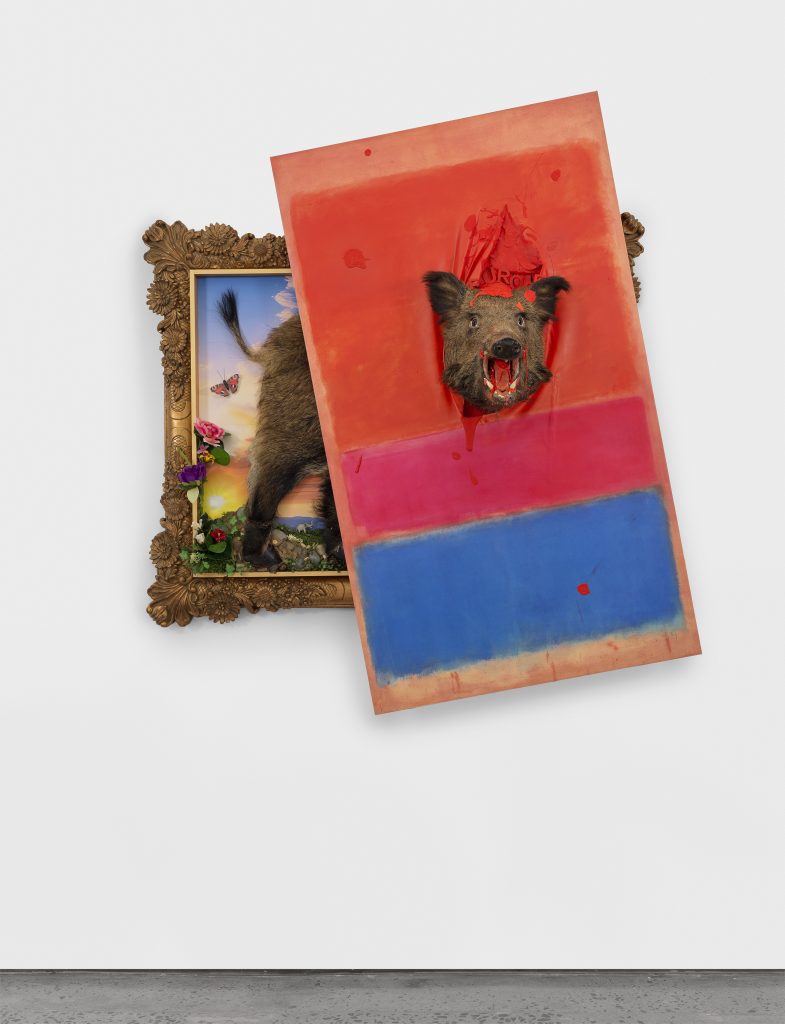
Shultis’ Art, Reflecting Lived Truth
Shultis’ artworks never snap, though. Instead, he holds them at a level where the peculiar, particular influence of imagery, even far-flung pieces of it, on personal and collective psychological development is made front and center.
That’s another key factor that I contemplated while visiting: accuracy. While there were direct, visual reference points in Shultis’ works, the artfully disjointed, slipping method of putting rounds of component imagery against a single backdrop felt true to life. It pointed back at the consumptive drive to produce and partake in what’s discussed as “content”: a neutral placeholder focusing on production for the sake of itself rather than individual personality. The anxiety, the boldness to the point of wondering if it might break of Shultis’ visual rhythms — it was illuminating.
And as surprising as it might be considering the carnival rides that Shultis’ exhibition laid out, images fueling a construction of lived experience was also outlined here as a distinctly personal, quiet, tucked away process. Because in the clear delineation of objects — in the back-and-forth of each clearly visible component building atop itself, every point of connection rings out impactfully. Shultis blends the physical, systematic, historical, and sweeping with the inward and the contemplative.
You’re left buried in perplexing but ensnaring images, as though accompanied by an aloof but clearly knowledgeable, even protective guide. A sudden pathway laid out ahead of you promising voracious colors and a rotating cast.
The “fun” that I felt amidst all this was an effervescence at what Shultis was delivering: an abrasive thrill-ride through our cultural landscape, stretching from centuries past to now. A marching band of sorts, adeptly combined with clear-headed incorporation of moments in the past into our to-go boxes from the present.
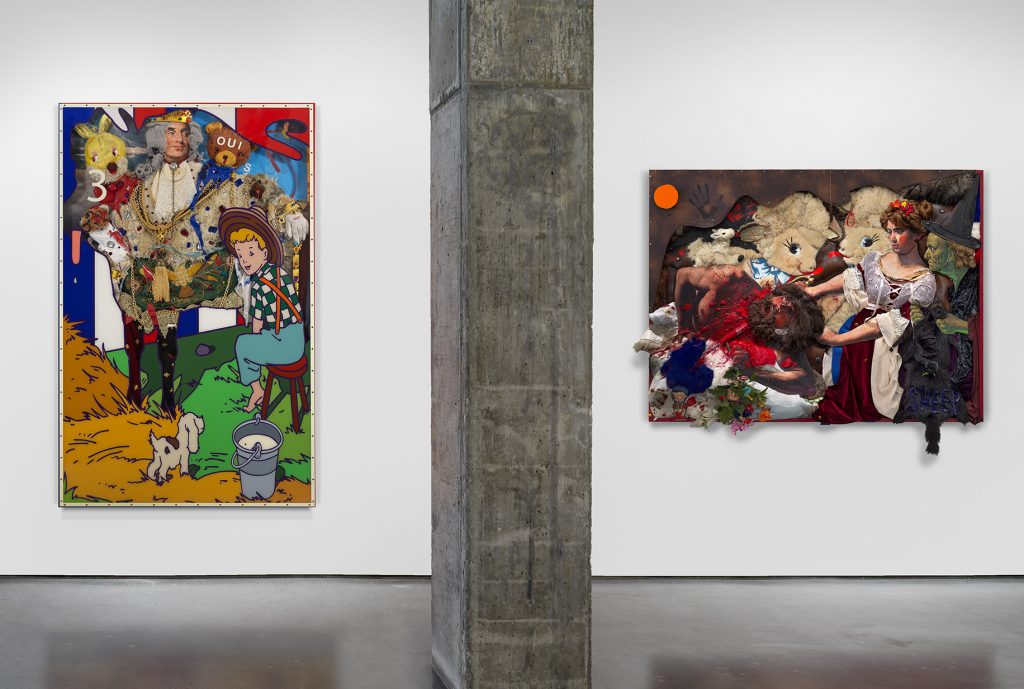
Optimism, Art History, & Time’s Advance
Shultis maintained the swirling intermingle of visual parts so that each component shined individually. In other words, Shultis’ reproductions of historical paintings within pieces where such appeared did not tend to dominate, visually — and neither did the matrices of modernity in which he embedded them.
Shultis’ “Window” (2024), for instance, includes an image hearkening to art historical eras from before modernism — behind an acrylic sheet, with a taxidermied barracuda up-top.
Via working in this manner, Shultis was delivering the historical process as something where we’re constantly adding, with those underlying foundation levels — the past, in whatever incarnation it appears — still very much in place as whatever we come up with next gets tacked on in the follow-up round.
And maybe that’s an optimistic viewpoint or a best case scenario, considering that some damaging socio-political movements persist hinging on an idea to wipe away forward motion entirely and impose a domineering order. But in Shultis’ hands, his shaping of history also feels like a way in which participants and partakers can achieve some level of genuine success: something that’s somehow actually uplifting, even if it’s also startling.
Shultis’ creations also suggested the obscuring done by both commodification and the mere passage of time. Isolating something as a token nod towards what came before and adding atop it at all can constantly jostle around the perspective you hold, towards clarity… or further obfuscation. History — on a wide scale and in terms of what we might encounter or contemplate on any given single day — is in our hands here.
The individual aesthetic lines combined into Shultis’ work diverge wildly, but you just can’t help but notice that the overarching images insist on making sense. So while there’s obvious chaos hinted at in the engaging assemblages of social detritus that Shultis put together, there’s also an opportunity for shoring up our attempt to make visual sense of the world that drives human creation across eras.
Shultis’ exhibition continues through October 12 at Morgan Presents.
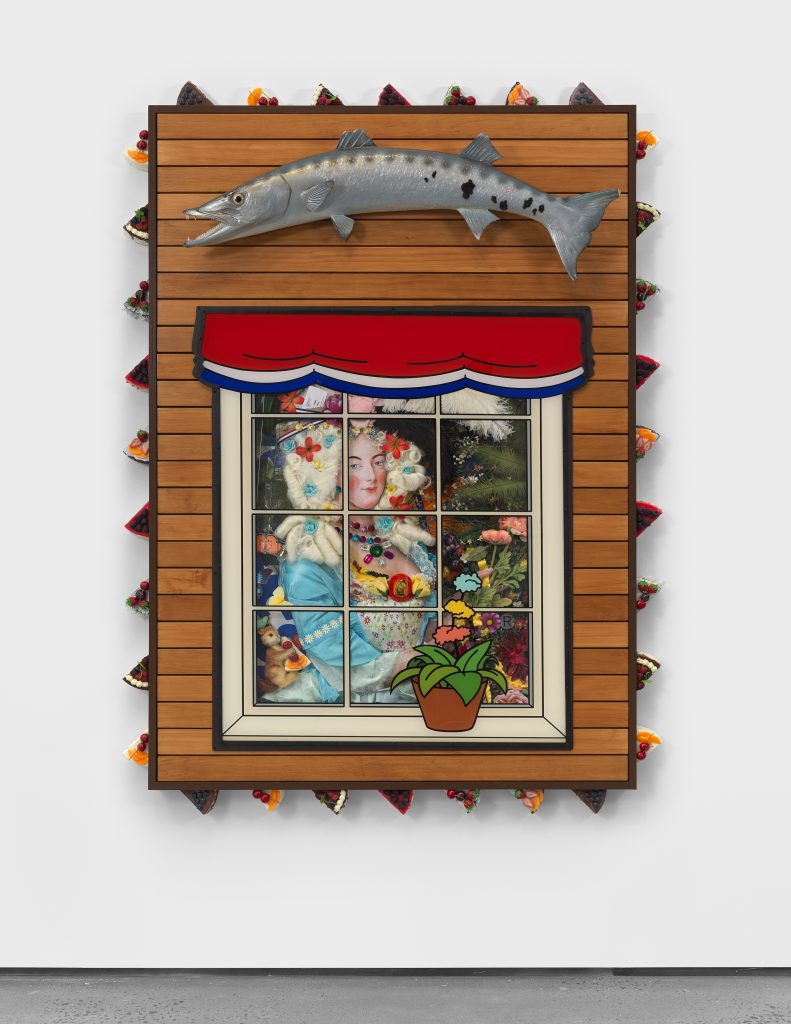
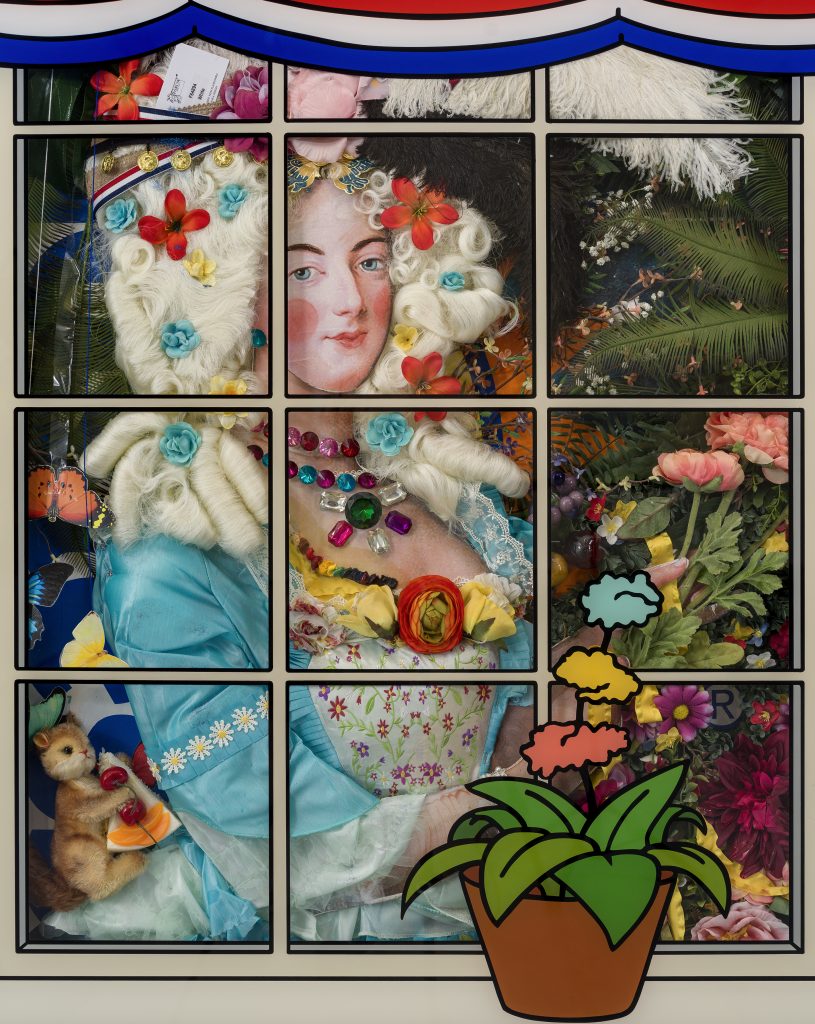
Featured image: “Mike Shultis: Déjà vu” (installation view), Morgan Presents, New York, September 4 – October 12, 2024. Image courtesy of Morgan Presents.
You may also like
-
Diana Kurz at Lincoln Glenn in New York: A Review of a Shining Art Exhibition
-
Dustin Hodges at 15 Orient in New York City: An Ensnaring Exhibition at an Exciting Gallery
-
Maren Hassinger at Susan Inglett Gallery in New York: Reviewing an Uplifting Art Exhibition
-
Enzo Shalom at Bortolami in New York City: Reviewing an Entrancing Exhibition of Paintings
-
“Ben Werther: Townworld” at Amanita in New York City: Reviewing a Richly Memorable Art Exhibition
